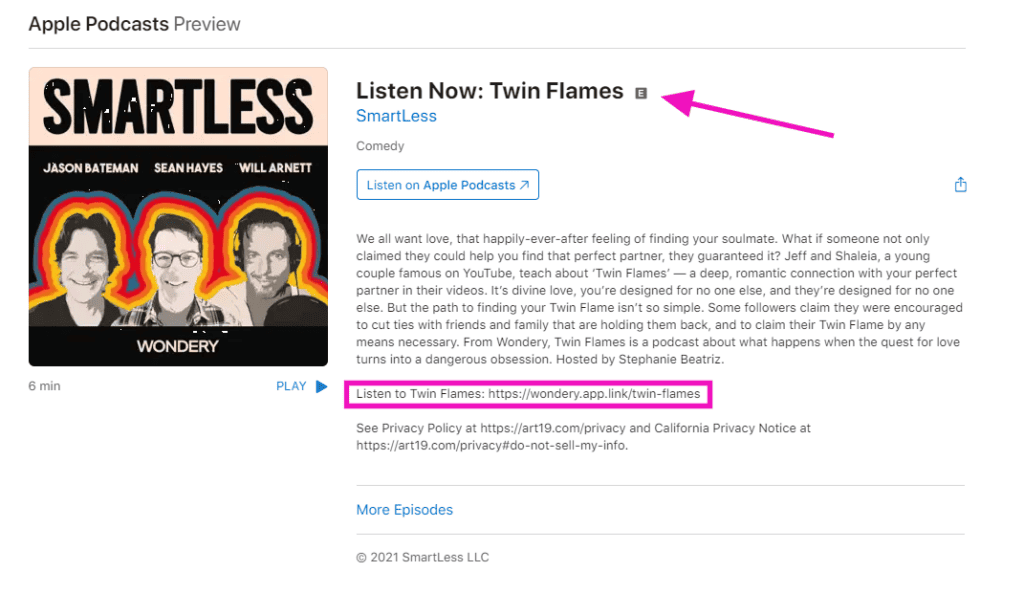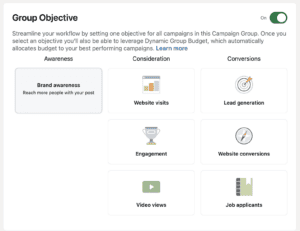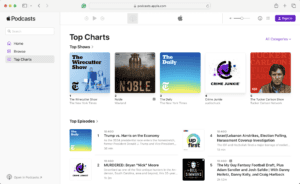Podcast swaps are like a friendly exchange between neighbors, but instead of borrowing a cup of sugar, you’re sharing your audiences to boost each other’s reach and engagement. If you’re looking to expose your show to new audiences, podcast swaps are for you.
This article will guide you through the ins and outs of podcast swaps, including choosing the right partner, crafting the pitch, and more. Let’s explore how this collaborative strategy can expand your show’s reach without much additional work.
What is a Podcast Swap (Also Known as a Feed Swap)?
A podcast swap, also known as a feed swap, is a promotional strategy podcast creators use to increase their audience reach and engagement. This strategy involves two or more podcasters agreeing to feature each other’s content on their respective platforms.
The process is as simple as giving another host your audio content to upload to their RSS feed. In most cases, each podcaster adds a brief introduction to explain that the episode is a special feature from another show.

The best part about a podcast swap is that you don’t have to create any new content. You can swap one of your existing episodes with another podcaster. Of course, if you prefer, you could create a fresh episode. This would make your swap more valuable.
Why Would You Do a Podcast Swap?
To cross promote! Cross promotion certainly isn’t a new strategy. Brands and businesses have been doing it since, well, forever. So what are the advantages?
Increased Audience Reach
Podcast swaps allow you to tap into another podcast’s listener base, exposing your content to a broader audience. By appearing on each other’s shows, you share your unique voices and content, enticing new listeners to check out your podcast. This cross-promotion can significantly expand your reach and potentially increase your subscriber count.
Enhanced Content Variety
Participating in a podcast swap introduces fresh perspectives and topics to your show, making your content more diverse and engaging. This variety can pique the interest of your listeners, keeping them hooked and looking forward to future episodes. It’s a great way to spice up your content and keep your audience engaged.
Networking Opportunities
Engaging in podcast swaps builds connections with other podcasters in your niche or related fields. These relationships can lead to collaborative projects, shared resources, and mutual support, fostering a sense of community and opening doors to new opportunities within the podcasting industry.
Cost-Effective Promotion
Podcast swaps are a budget-friendly promotional strategy. Instead of investing in expensive marketing campaigns, you exchange appearances on each other’s shows, which can be a more effective and personal way to promote your podcast. This method leverages the existing audience and credibility of each podcaster, offering a high return on investment.
Learning and Growth
By interacting with other podcasters, you can learn new techniques, gain insights into different podcasting styles, and get inspired by how others manage their shows. This learning experience can inspire you to experiment with new content, presentation styles, or production methods, contributing to your growth as a podcaster.
How Often Should You Do Podcast Swaps?
There’s no one-size-fits-all answer here. How often you should engage in podcast swaps depends on your podcast’s schedule, content, and goals. Here’s a straightforward guideline:
Balance with Regular Content
Your primary focus should be on delivering consistent content to your audience. Podcast swaps should complement, not overshadow, your regular episodes.
For instance, if you release weekly episodes, consider doing a swap once a month to maintain variety without disrupting your usual content flow. But if you publish new episodes daily, you can swap more often.
Audience Engagement
Pay attention to your audience’s feedback and your podcast analytics. If they respond positively to swaps, you might consider doing them more frequently. However, if they prefer your standard content, keep swaps occasional to maintain listener satisfaction.
Content Relevance
Align swaps with your content strategy. Choose partners whose content adds value to your podcast, ensuring that swaps feel relevant and enriching to your listeners.
If you can’t find relevant podcasts that make sense to trade episodes, don’t force it by swapping with unrelated shows. That will disappoint your audience and you’ll lose listeners.
Capacity and Scheduling
Assess your capacity to manage podcast swaps effectively, considering the extra coordination and production they entail. Ensure that swaps fit comfortably into your production schedule without causing burnout or compromising content quality.
How to Manage a Podcast Swap
Making podcast swaps happen is straightforward. Follow these steps:
Step 1: Choose a Podcast with a Similar Audience
Identify a podcast that shares a similar target audience to ensure the content will resonate with both listener bases. Look for shows with overlapping themes or interests but ensure they’re not direct competitors. A similar audience increases the likelihood that listeners will engage with the swapped content and potentially become regular listeners of your podcast.
If you have any friends who podcast in the same niche as you, it’s smart to approach them first. They will be more likely to accept your request than strangers.
Podcast Marketer Lauren Passell has a great Podcast Promo Swap database. These are shows looking for podcast feed swaps. You can sort and filter the list to find shows that match your audience. Then use the contact information to send them a personalized email.
Step 2: Craft a Pitch for an Episode Swap
Create a compelling proposal that outlines the benefits of the episode swap for both parties. Highlight what you admire about their show, how your audiences align, and what unique perspectives or content you can bring to their listeners. Be clear, concise, and personal to make a strong case for why the swap would be mutually beneficial.
That said, keep your pitch as brief as you can. Other podcasters may be willing to swap episodes with you, but they don’t have the time or attention span to read long emails with excessive detail.
Step 3: Select an Episode to Represent Your Show
Choose an episode that best showcases your podcast’s strengths, whether it’s a popular episode, one with engaging content, or a show that received positive listener feedback. This episode should give the other podcaster’s audience a good sense of what your podcast offers.
Step 4: Negotiate the Terms of Your Podcast Swap
Discuss and agree on the specifics of the swap, including the episodes to be swapped, the timing of the releases, and any additional promotional efforts. Clear communication ensures both parties have aligned expectations and understand the commitment involved.
Some creators are particular about keeping things fair, so they want to make sure they give the same number of listens/downloads as they get. For instance, a podcaster may put a time limit on the swap (where shows are removed at the deadline) or remove your episode once it hits a certain download number. Just make sure these details are clear.
It also helps to schedule your podcast swaps at the right times to give yourself a break. For instance, if you have a planned holiday coming up, schedule the swap to give yourself that week off. In this sense, swaps can be a good quality of life booster.
Step 5: Consider Other Ways to Promote the Episode
Beyond the swap itself, think of additional promotional strategies to maximize the episode’s reach. This could include social media promotion, newsletters, or mentioning the swap in episodes leading up to and following the swap. The goal is to ensure both audiences are aware and encouraged to listen.
Step 6: Craft Your Introductory Copy
Prepare a brief introduction for the swapped episode to introduce the swapped episode to your audience. Your goal is to make them aware that this isn’t your episode, but you think they’ll love it because it’s just what they’re looking for. You don’t want anyone to feel bait-and-switched.
Step 7: Prepare Your Audience for the Swap
Inform your existing audience about the upcoming swap to build anticipation and explain the benefits. This preparation helps ensure they understand the context and purpose of the swapped episode, maintaining their engagement and interest.
Step 8: Schedule the Episode Swap
Coordinate the release dates for the swapped episodes, ensuring both are published simultaneously or within a close timeframe. Consistent scheduling helps maintain listener interest and maximizes the cross-promotion impact.
Step 9: Label the Swapped Episode Well
Clearly label the swapped episode in your podcast feed to indicate it’s part of a special event. This clarity helps listeners understand the context and ensures they recognize the episode as a unique collaboration rather than a regular installment of your podcast.
Grow Your Audience with Podcast Swaps
As you can see, podcast swaps are a great way to expose your show to new audiences. If you use an existing episode, they don’t require much work either. The sooner you start networking with other podcasters, the sooner you’ll be able to take advantage of this unique marketing strategy.



Comments are closed.